Rare Rides Icons: The Lincoln Mark Series Cars, Feeling Continental (Part XLI)

We last left the Mark VII story - sans Continental - in 1988. Through the annual color and trim changes for the Designer Series and an eventual simplification of trim levels entirely, the Mark VII was both leaner and more focused on performance by its fifth model year. As we learned in our last installment, in 1988 only two flavors of Mark were on offer: The luxurious Bill Blass Designer Series, and the performance-oriented LSC. Both cars used the same High Output version of the 5.0-liter (really 4.9-liter) V8 from the Mustang GT. But the important jump in power was accompanied by even more consolidatory changes.
The last trappings of the Designer Series specialness that dated back to 1976 were all but gone in 1988, as the Bill Blass Mark VII was served a one-two punch: Not only was a unique paint color and interior theme absent but the colors it did have were all shared with the LSC. The Bill Blass was available in eight different colors. The LSC was available in even more colors (14 total) than the Blass, on account of its preferred performance car status.
Interior Blass options were limited to two, Shadow Blue and Sandalwood. The LSC featured those two colors and additionally could be clothed in Titanium, Cabernet, or Cinnabar interior hues. Newly limited in scope were the Mark’s wheel designs, which slimmed down to two for 1988.
Blass editions wore the same wire spoke aluminum wheel presented since 1984, while there was a new cast aluminum “handling” wheel with a turbine design reserved for the LSC. A sportier touch, the LSC’s new wheel was color-keyed to the exterior on dark-colored examples. To assist in the handling prowess of the LSC its wheel was an inch larger than the Blass; buyers enjoyed a huge 16-inch wagon wheel.
There was another in-between year in 1989, where the only significant change to the Mark VII was a reworking of the LSC’s steering rack. The update would have been more suitable in 1988 with the arrival of the H.O. engine, but Lincoln was spreading their newsworthy updates as thin as possible. In ‘89 the LSC wore a hood ornament for the last time, while the Bill Blass persisted with its upright crosshair.
The Mark VII was showing its age by 1990 and lived among coupe rivals that had moved beyond early Eighties styling. To keep the coupe compliant Mark VII received a driver’s side airbag via the four-spoke steering wheel from the Taurus, which was shared with most other Ford passenger vehicles that year (and Aston Martins). Other safety advances included three-point seatbelts for the two outside seats at the rear.
Elsewhere in the interior, the dashboard was given a cosmetic rework, with a rearrangement of wood trim and a more horizontal design. The driver-oriented pod layout was softened and integrated into a dash that had less style overall than the original. The reworked design wasn’t too far off the one used in the Town Car. LSC trims had a revised speedo that went up to 120 miles per hour.
The LSC fared better with exterior edits in 1990, when it adopted a lace alloy look that was quite similar to the BBS design copied by numerous manufacturers throughout the early Nineties (Pontiac, BMW, Infiniti, etc.). Branching off the LSC was a new Special Edition variant designated LSC SE. The SE package was monochromatic in theming and was the sort of last gasp that occurs toward the end of a model’s life.
To that end further consolidation occurred in 1991, as Bill Blass lost what remained of its identity. The wire wheels and softer suspension it used previously were both ditched, as the Blass adopted LSC characteristics fully. Aside from a couple of Bill Blass logos, it was differentiated from the LSC by its digital dash (analog gauges only on LSC).
Both models received a revised seat that year, sharing a bolstered LSC design that had a lower headrest than previous years. It was the first time Bill Blass used the LSC-style seat. Curiously, the Bill Blass stepped away from the plush but modern seat styling it used from 1984 to 1987, when in 1988 button tufting from the Seventies returned. There was a new three-panel seat bottom that was mirrored on the seatback, with additional button tufting. Car seat design was on the move away from buttons by the late Eighties, so it was odd to see its re-implementation here.
1992 saw the last outing of the nine-year-old Mark VII, with the addition of a new color offering: Deep Jewel Green Metallic. By then, sales had bottomed out and a new Mark was long overdue. A total of 190,832 Mark VIIs were sold during its long run, with sales only reaching the unloved Mark VI’s level for one year, 1988.
Even though the Mark VII was an all-new direction for the model, its sales figures reflected how the PLC was on its way out (along with the coupe in general). Sales at debut in 1984 of 33,344 were worse than the Mark VI the prior year. That figure dropped to 18,355 in 1985 as the newness wore off and the “buy a new car every year” customer of the Sixties and Seventies was no more.
A slight rebound in 1986 to 20,056 sales was followed by another drop to 15,286 in 1987. The lone bright spot was the addition of the H.O. 5.0 engine when sales more than doubled: 38,259 cars. The decline was consistent afterward as the Mark was old and needed to be replaced. There were 28,607 sold in 1989, 22,313 in 1990, and 8,880 in 1991. The model’s final year in 1992 proved to be the rarest one, as only 5,732 were sold.
Foreign competition in the marketplace was an additional obstacle for the Mark VII, as more car models vied for a shrinking coupe buyer group. In 1985 the average car cost $9,005 ($25,893 adj.) but the luxurious Mark was between $22,400 ($64,410 adj.) and $26,660 ($76,660 adj.). Cut to 1990 when the same Mark was on sale and the average car cost $16,000 ($38,098 adj.), but the Mark VII had increased to $29,400 ($70,006 adj.).
But Detroit refused to let go of its legendary PLC names, and as the early Nineties dawned it was time for one final showdown between the Mark (now in iteration VIII) and the last of its staunch rival, the Cadillac Eldorado. We’ll start with Mark VIII next time.
[Images: Ford, dealer]
Become a TTAC insider. Get the latest news, features, TTAC takes, and everything else that gets to the truth about cars first by subscribing to our newsletter.

Interested in lots of cars and their various historical contexts. Started writing articles for TTAC in late 2016, when my first posts were QOTDs. From there I started a few new series like Rare Rides, Buy/Drive/Burn, Abandoned History, and most recently Rare Rides Icons. Operating from a home base in Cincinnati, Ohio, a relative auto journalist dead zone. Many of my articles are prompted by something I'll see on social media that sparks my interest and causes me to research. Finding articles and information from the early days of the internet and beyond that covers the little details lost to time: trim packages, color and wheel choices, interior fabrics. Beyond those, I'm fascinated by automotive industry experiments, both failures and successes. Lately I've taken an interest in AI, and generating "what if" type images for car models long dead. Reincarnating a modern Toyota Paseo, Lincoln Mark IX, or Isuzu Trooper through a text prompt is fun. Fun to post them on Twitter too, and watch people overreact. To that end, the social media I use most is Twitter, @CoreyLewis86. I also contribute pieces for Forbes Wheels and Forbes Home.
More by Corey Lewis
Latest Car Reviews
Read moreLatest Product Reviews
Read moreRecent Comments
- Lorenzo If it's over 30 years old and over 80k miles, and not a classic, it's a parts car, worth no more than 20% of original price.
- Dusterdude No mileage noted on a 33 year old car means likely well north of 300k + miles , along with issues noted , should equate to an ask price of less than $3k
- Ajla IMO, something like this really should be naturally-aspirated.
- Kjhkjlhkjhkljh kljhjkhjklhkjh Unless they are solid state batteries you BAN THEM. I like EVs... but EVs like to burn ... for days
- Kjhkjlhkjhkljh kljhjkhjklhkjh uh .. it looks like a VW golf got the mumps



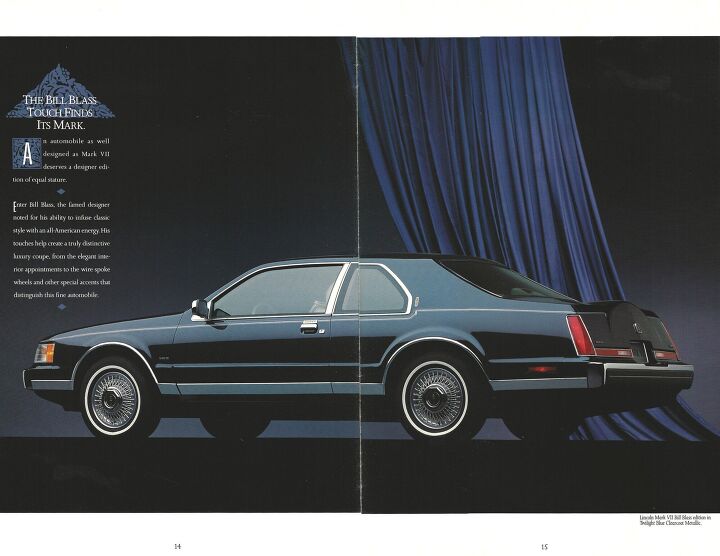

























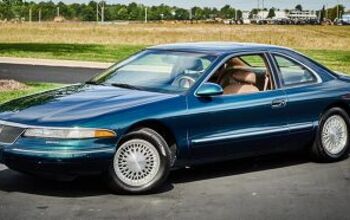
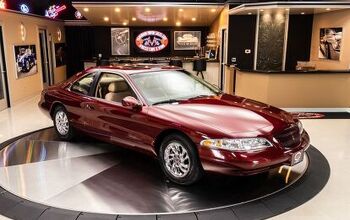
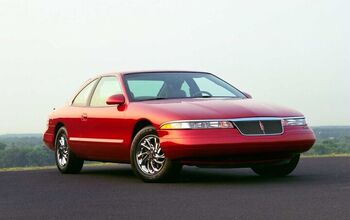
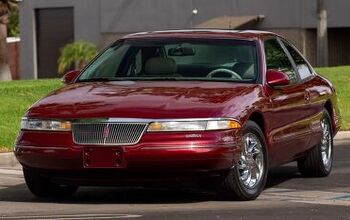
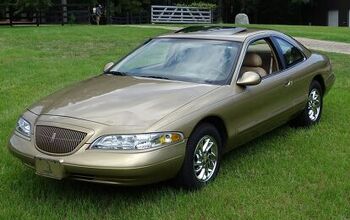










Comments
Join the conversation
Surprised to learn Lincoln sold relatively few Mark VII's during their run. In South Florida these seemed to be everywhere, particularly the all -Black SE editions. The mechanic who worked on my Mustang GT had one on his lift during one of my visits. I asked if it was being serviced, he replied "No, the owner wants more power so we're building a 460 for it", Sure enough, I walked underneath and the little Windsor was gone and in its place was some custom work to make room for the much larger 385 series big-block. Really cool cars for their time. Seems like once every 30-40 years Lincoln wakes up from it's Coma and rolls out something interesting. Then marketing ignores it for 6-7 years and it dies a slow and painful death. We're coming up on 40 years since the Mark VII, Lincoln can you hear us? Wake up!
The Mark III and VII are my favorite. If I had the space, either one would have a home in my driveway. I don't understand why the VII does not get the attention it deserves.